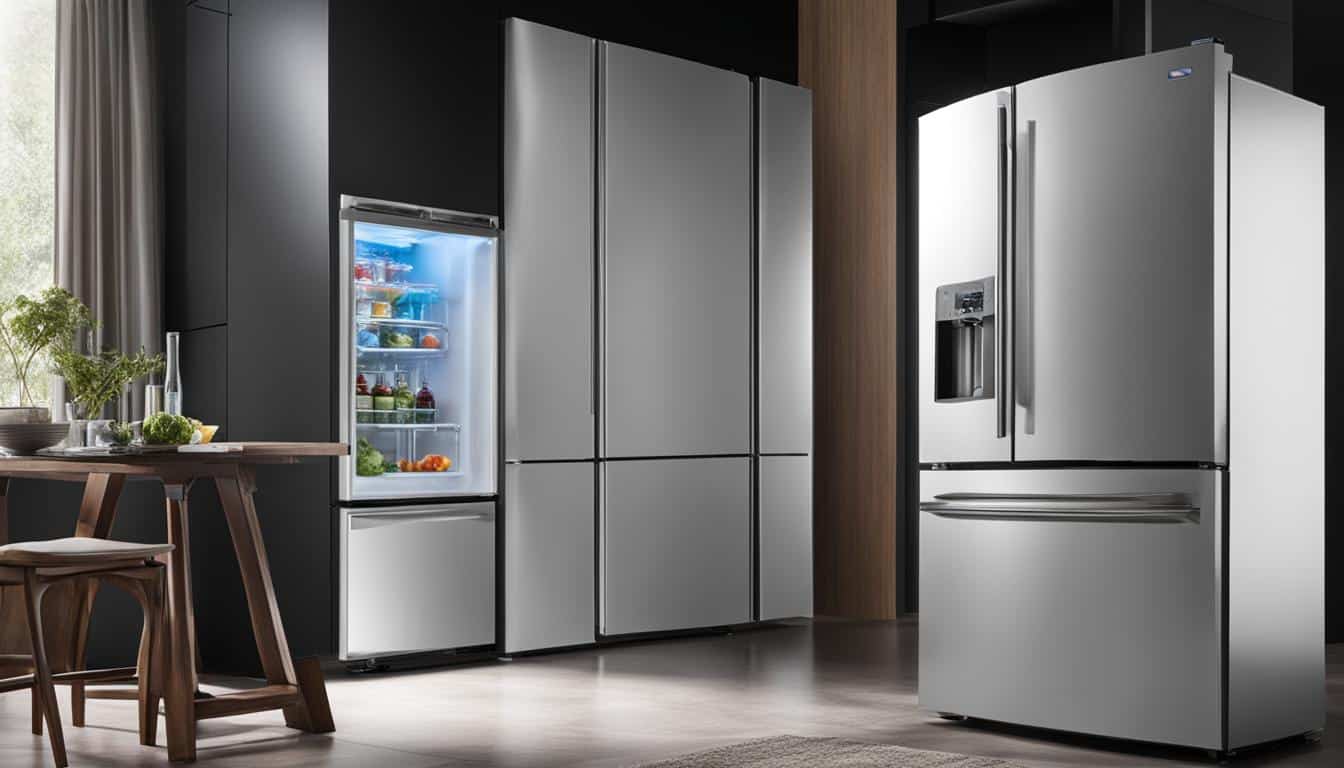Are you tired of the common misconceptions surrounding the use of ice makers in refrigerators? Look no further.
In this article, we’ll debunk those pesky Ice Makers in Refrigerators Myths. Say goodbye to those false assumptions and get ready for a chill experience with your ice maker.
From the essentiality of ice makers to noise and maintenance, we’ve got you covered. Keep on reading to learn the truth behind these 10 myths and start enjoying your ice maker like never before.
Myth #1: Ice makers are essential for every fridge.
It’s a common belief that ice makers are crucial for every fridge. However, that’s not entirely true.
While it’s handy to have a continuous supply of ice in your refrigerator, there are other ways to achieve the same goal. Traditional ice trays work just as well, especially if freezer space is limited, or you’re on a budget.
Consider your ice-making habits before investing in an ice maker. Do you frequently use ice for drinks, or do you mostly rely on purchased bags of ice? Answering these questions can help you decide whether an ice maker is a necessity or a luxury.
Remember, just because your friends have ice makers in their refrigerators doesn’t mean you need one too.
Pros and Cons of Having an Ice Maker in Your Refrigerator
| Pros | Cons |
|---|---|
| Convenience: No need to refill ice trays manually | Expensive: Installation and repair costs can be high |
| Continuous Supply: Always have ice on hand | Freezer Space: A built-in ice maker takes up freezer space |
| Customizable: Some ice makers offer different ice shapes and sizes | Malfunctions: Dysfunction of an internal component can lead to more significant problems |
“Don’t rely on outdated ideas of what your home should have. Tailor your appliances to your lifestyle.”
Myth #2: They’re constantly churning out ice, wasting energy.
Do you worry that your refrigerator ice maker is wasting energy by constantly churning out ice? Well, you can relax because modern ice makers are designed to be smart and energy-efficient.
They only produce ice when needed, and newer models automatically shut off when the bin is full, saving you energy and money on your utility bills.
You may come across older models that aren’t quite as efficient. However, new advancements in technology have made it possible for today’s ice makers to be much more energy-conscious.
So, if you’re thinking about upgrading your refrigerator, be sure to check out the latest energy-efficient models for the most cooling and ice-making power with minimal waste.

Still, have doubts about your ice maker’s energy usage? Check your owner’s manual for tips on how to maximize your freezer’s efficiency and reduce energy consumption.
Myth #3: You can leave them on all the time, even if you’re not using ice.
If you think that leaving your ice maker on all the time, even when you’re not using ice, is a good idea, think again. This myth can be costly, as ice makers consume power even for internal maintenance when not actively making ice.
It’s best to turn off your ice maker when you won’t be needing ice for a while, like when you’re going on vacation or when you already have enough ice. That way, you can save on electricity and cut your energy costs.
By turning off your ice maker, you can avoid unnecessary power consumption and help protect the environment. So go ahead, hit that off button, and save some money.
Myth #4: They’re maintenance-free.
Don’t let this myth fool you – ice makers in refrigerators require regular cleaning and maintenance, just like any other appliance.
Regularly cleaning the dispenser chute can help prevent bacteria buildup, while checking for clogs or leaks ensures your ice maker stays in top shape. When in doubt, consult your refrigerator’s manual for specific maintenance instructions.
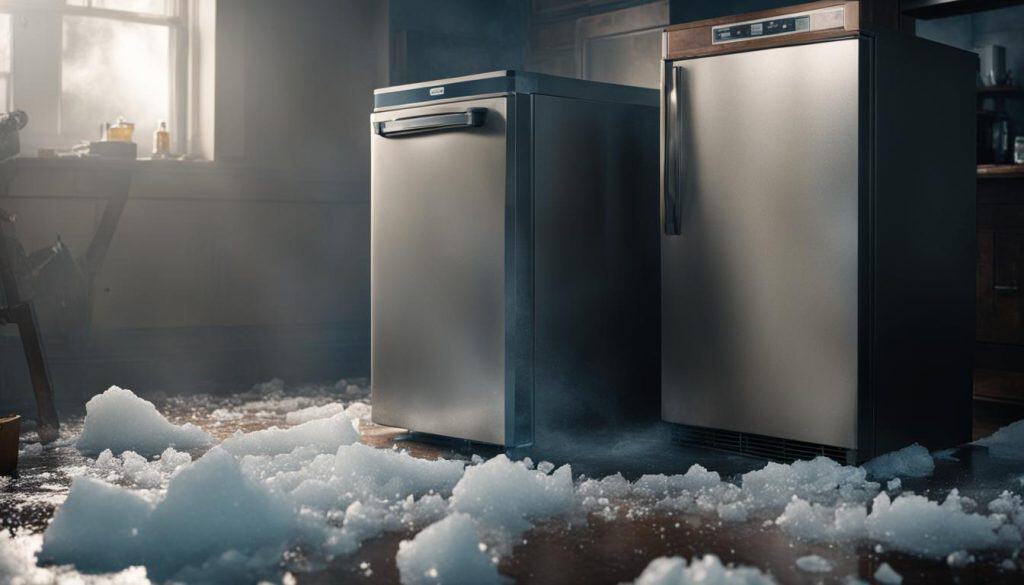
Regular maintenance can help extend the lifespan of your ice maker and keep your ice fresh and clean. Don’t underestimate the importance of caring for your appliances!
Myth #5: Ice maker water is cleaner than tap water.
It’s a common assumption that ice maker water is cleaner than tap water. Although some ice makers have built-in filters, it doesn’t necessarily mean that the water is purer than that coming from your tap. If you’re concerned about contaminants in your ice maker water, consider using a separate water filter.

Your ice maker might produce clean ice, but that doesn’t necessarily mean that the water it uses is clean.
Tap water vs. Ice maker water
| Tap Water | Ice Maker Water | |
|---|---|---|
| Contaminants | May have contaminants | May have contaminants |
| Purity | Filtered by municipal water treatment plants | Filtered by ice maker’s built-in filter (if available) |
| Taste and smell | May taste or smell like chlorine or other chemicals | Takes on taste and smell of the water it’s made from |
While tap water and ice maker water have similar levels of purity, the taste and smell of the water can differ. Tap water may contain chemicals like chlorine, which can affect the taste and smell of ice made from it. On the other hand, ice maker water will take on the taste and smell of the water it’s made from.
If you’re unsure about the quality of your ice maker water, a separate water filter can add an extra layer of protection against contaminants. Consult your refrigerator’s manual or an appliance specialist for advice on the best filter for your unit.
Myth #6: Ice makers are noisy and disruptive.
Some people may hesitate to purchase an ice maker in fear of unnecessary noise and disruption in their household.
However, this myth is not entirely true. Modern ice makers have come a long way and have become much quieter than their older models. Even though you may hear a slight hum or gurgle during operation, it is not overly disruptive and won’t interfere with your daily activities.

It is important to note that if you have an older model, it may make more noise than a newer one.
If this is the case, you might consider upgrading your ice maker to a newer model that will be less noisy and more efficient. Overall, a noisy ice maker should not be a concern if you choose a newer model.
Myth #7: Only use distilled water in your ice maker.
If you want to keep your ice cubes crystal clear and avoid mineral buildup in your ice maker, you may have heard that it’s best to use only distilled water. However, this is not always necessary.
Using tap water in your ice maker is generally safe, unless you live in an area with high mineral content. In those cases, mineral buildup can occur over time and affect the quality of your ice. If you’re unsure about the mineral content in your tap water, it’s a good idea to consult your refrigerator’s manual.
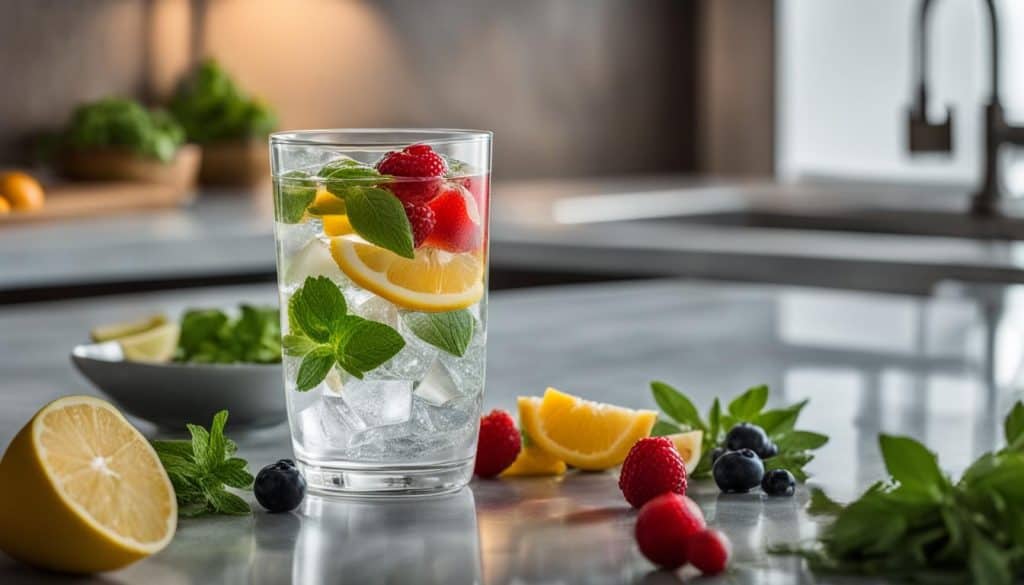
Even if your water has high mineral content, you may not need to resort to using only distilled water.
Some refrigerators come with a built-in water filter that can help reduce impurities in your water and improve the quality of your ice. If your fridge has a water filter, make sure to replace it regularly for the best results.
Remember, consistently using only distilled water can be expensive and time-consuming, so it is not always necessary to maintain a quality ice-making experience. Use tap water unless the manual of the refrigerator says otherwise.
Myth #8: You can put anything in the ice maker bin.
It might be tempting to use the ice maker bin for storing fruits, vegetables, or other food items when there’s no more space in the fridge. However, this can actually harm your ice maker and the quality of the ice it produces.
When you put food items in the ice bin, it can clog the mechanism and affect the ice-making process. Additionally, the moisture from the food items can harbor bacteria, which can contaminate the ice and potentially make you sick.
Stick to using the ice maker bin for making and storing ice only. If you need more space for food storage, consider investing in some stackable organizers or a separate refrigerator.
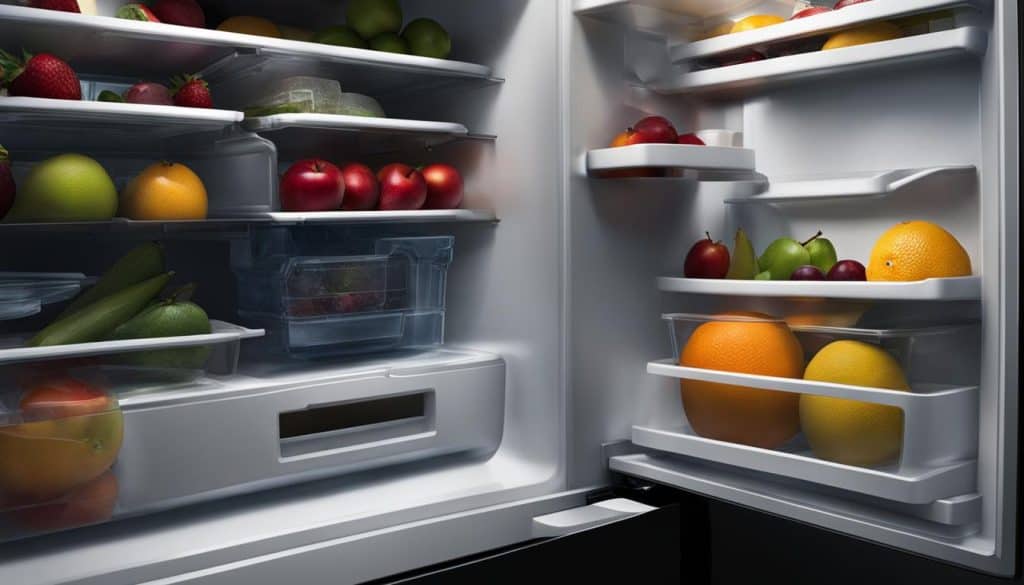
“Using the ice maker as a secondary refrigerator is a bad idea. You can clog the mechanism and cause damage to the appliance” – John Smith, Appliance Repair Specialist.
Myth #9: Ice makers are immune to mold or mildew.
While ice makers in refrigerators provide us convenience, they can also be breeding grounds for mold and mildew due to the combination of moisture and cold temperatures.
To prevent mold and mildew from forming in your ice maker, it’s crucial to keep the bin clean and dry.
It’s recommended to wipe your ice maker’s bin and dispenser regularly with a damp cloth and mild soap to keep them clean and dry. Remember to avoid using harsh chemicals that may damage your ice maker’s components.
Additionally, avoid letting ice sit in the bin for extended periods as this can lead to the growth of mold or mildew. It’s recommended to empty the bin and replace its ice regularly.
By taking these simple steps, you can ensure that your ice maker remains mold and mildew-free, providing you with clean and refreshing ice.
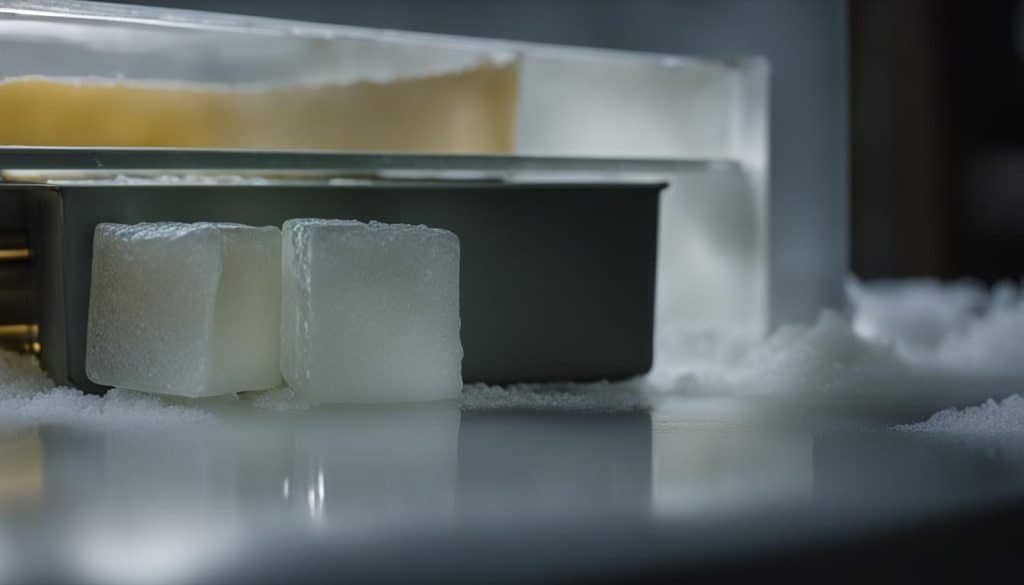
Myth #10: Fixing a broken ice maker is always expensive.
Many people assume that fixing a broken ice maker is always expensive, but that’s not always the case. Before you panic, try troubleshooting the problem yourself. Simple fixes like replacing a filter or cleaning a sensor can be completed with ease and won’t break the bank.
If you’re not confident in your DIY skills, it’s still worth calling a professional for an estimate. Sometimes the issue is more complex than it seems and requires specialized knowledge and tools. But don’t assume that you’ll always be hit with a hefty repair bill.
Remember, regular maintenance and cleaning can also reduce the likelihood of your ice maker breaking down in the first place. So don’t skip out on these important tasks.
By staying proactive and informed about your appliance, you can save yourself from unnecessary expenses and headache. Don’t let the fear of an expensive repair hold you back from enjoying perfectly chilled beverages at home.
